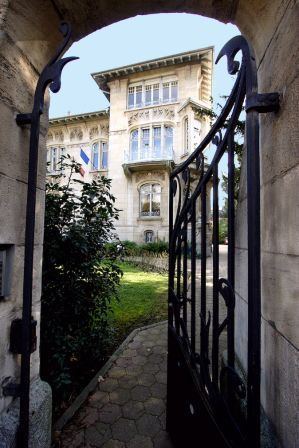Formation 1992 Website www.obs.coe.int | ||
 | ||
Type International organisation Membership 42 active members (41 countries plus the European Union represented by the European Commission | ||
The European Audiovisual Observatory was set up by the Council of Europe as a Partial Agreement. Its legal basis is Resolution (92) 70 of the Committee of Ministers of the Council of Europe, 15 December 1992. The idea for the Observatory originated at the European Audiovisual Assizes in 1989, and was actively pursued by Audiovisual Eureka during the years 1989 to 1992.
Contents
- Information
- Scope
- Target Groups
- Team
- Headquarters
- Network
- Members
- Advisors
- Information on Markets and Financing
- Legal Information
- References
The observatory provides statistical and analytical information on the fields of: film, television, video/DVD, new audiovisual media services and public policy on film and television.
Information
This information is available in the form of: Market reports, statistics and financial analyses as well as legal reports and news up-dates. The information is distributed by the Observatory in the form of products and services, some available for purchase, many free of charge: Print publications, information on-line, databases and directories, and contributions to conferences and workshops.
Scope
The Observatory collects, processes and distributes information on the audiovisual sector in its member states as well as on the work of international organisations. Occasionally it also follows developments in other territories.
Target Groups
The information provided by the European Audiovisual Observatory is aimed at professionals working within the audiovisual sector: producers, distributors, exhibitors, broadcasters and other media service providers, international organisations in this field, decision-makers within the various public bodies responsible for the media, national and European legislators, journalists, researchers, lawyers, investors and consultants.
Team
The Executive Director, Susanne Nikoltchev, heads a multi-cultural team from several different European countries. Structurally, the Observatory is divided into two departments: The Department for Information on Markets and Financing headed by Gilles Fontaine, the Department for Legal Information headed by Dr. Maja Cappello.
These two departments are responsible for the collection, processing and editing of all the Observatory's information which is distributed in the form of products and services. The Observatory also hosts the secretariat of the European Platform of Regulatory Authorities (EPRA) thus allowing cooperation between the two bodies in the field of information collection. The official languages of the European Audiovisual Observatory are English, French and German.
Headquarters
The Observatory is housed in the famous Art Nouveau Villa Schutzenberger in Strasbourg's 'European quarter'. This office space is made available by the City of Strasbourg.
Network
The European Audiovisual Observatory has built up and manages a unique European information network from which it collects its information. This network is made up of:
Members
The European Audiovisual Observatory has 41 member states. The European Union, represented by the European Commission, is also a member. The members of the Observatory are represented on its Executive Council, which meets twice a year in order to adopt the Observatory's action plan and approve its budget. The representatives within the Executive Council usually come from those ministries and national institutions which deal with cultural or audiovisual policy.
Advisors
The Observatory's Advisory Committee is composed of representatives from the main European professional organisations as well as from the Observatory's partner organisations. It meets regularly in order to advise the Observatory on the information needs of the professionals of the audiovisual sector.
Information on Markets and Financing
Print Publications:
Thematic reports:
Databases/Directories:
Legal Information
Publications
Databases/Directories
